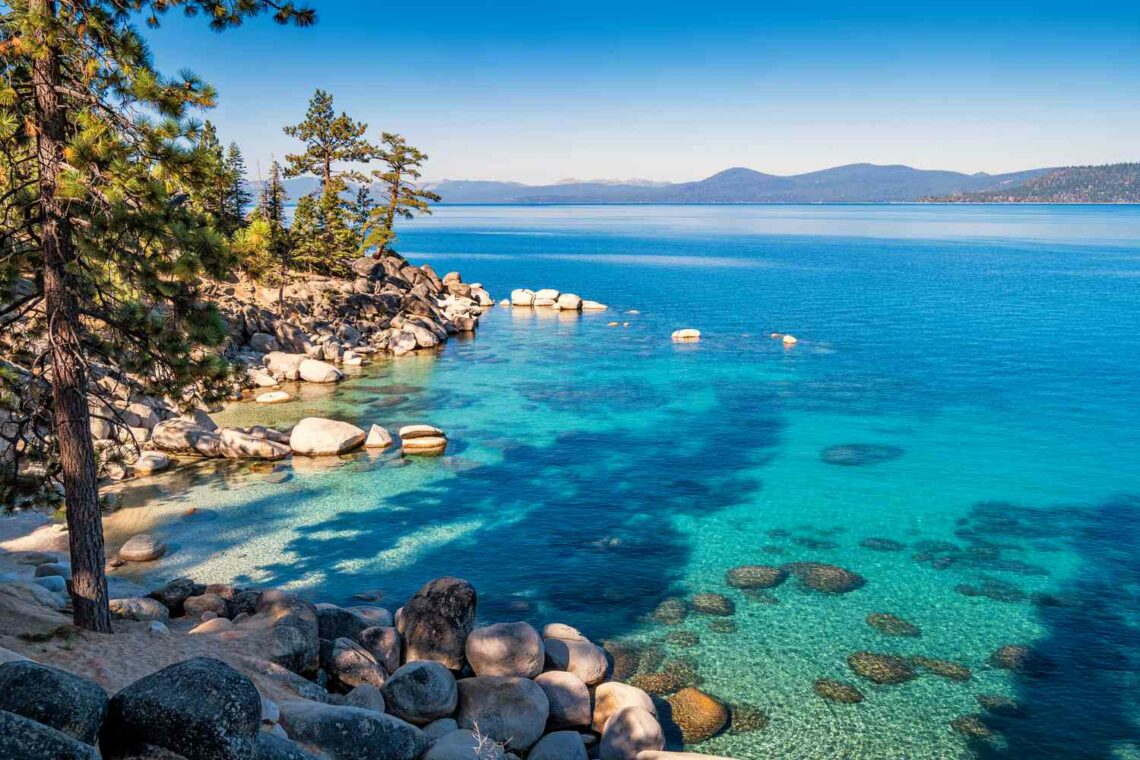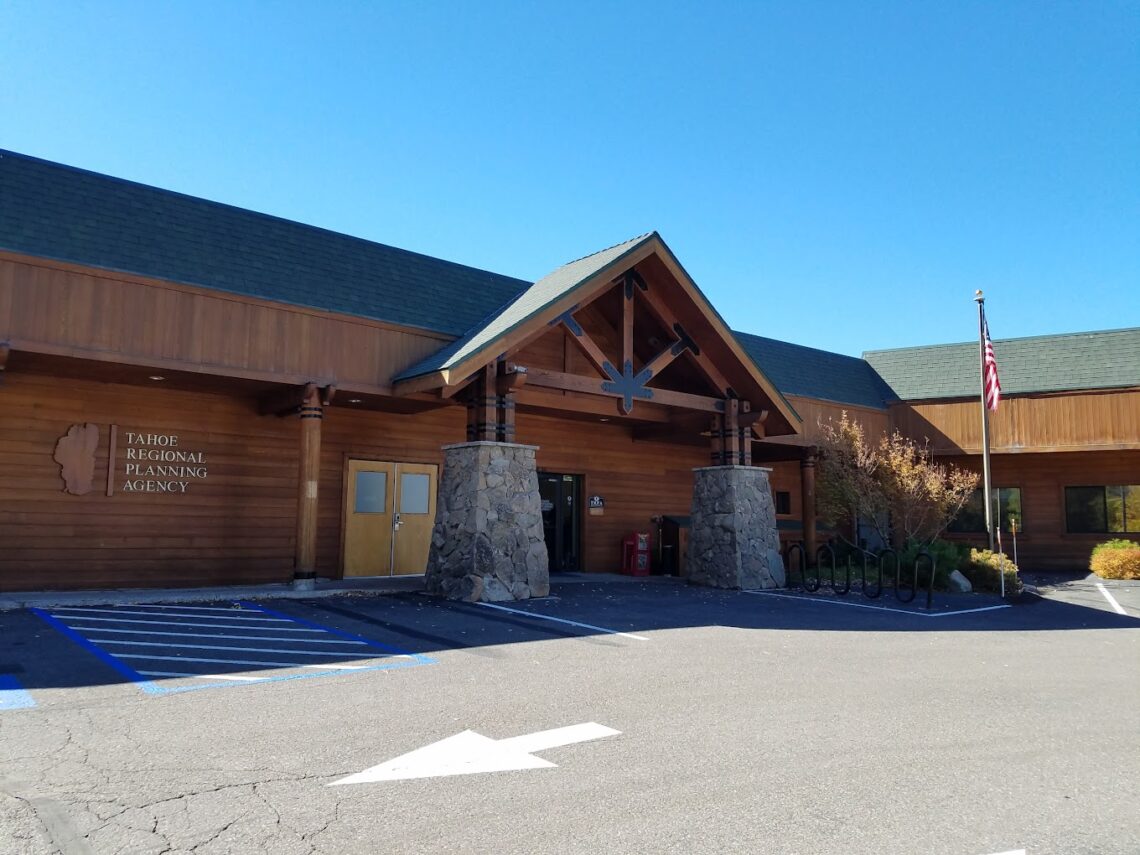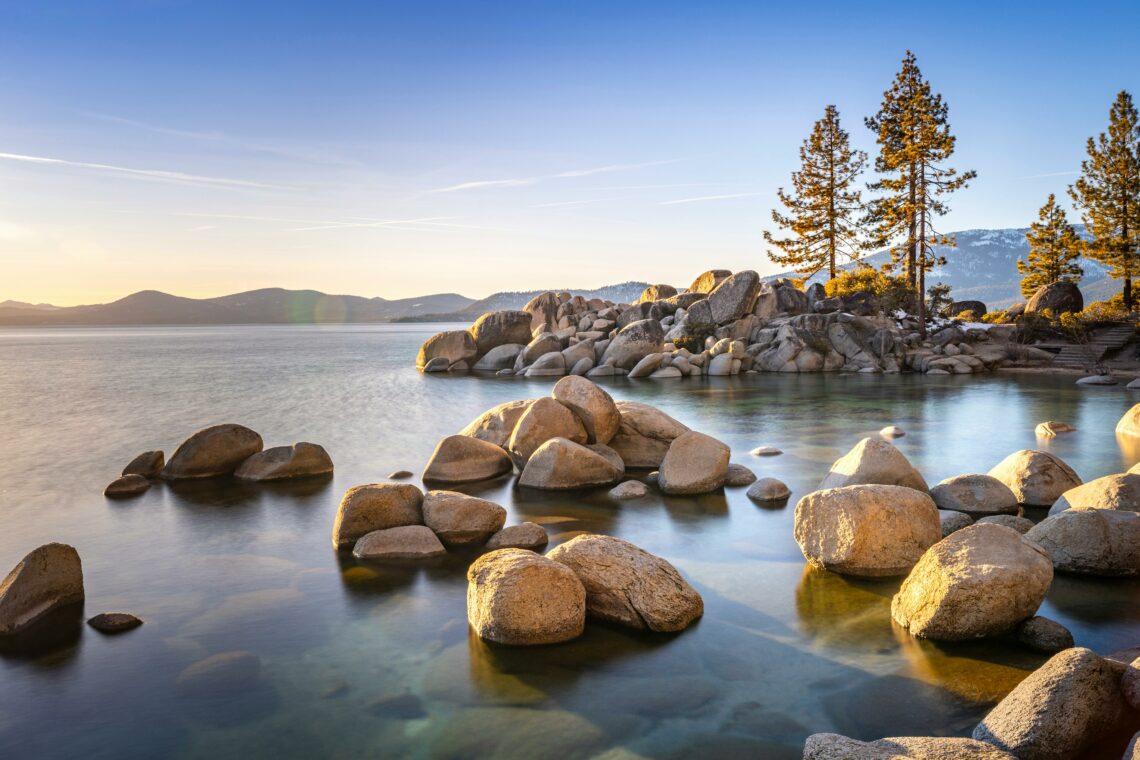Moving to Lake Tahoe offers an unparalleled opportunity to enjoy stunning natural beauty and a vibrant community. However, like any desirable location, there are specific local regulations and restrictions that new residents need to be aware of. These regulations are designed to preserve the environment, maintain community standards, and ensure the safety and well-being of all residents. This article explores the key regulations and restrictions new residents should be familiar with when moving to Lake Tahoe.
Environmental Protection
Lake Tahoe is renowned for its pristine environment, and there are strict regulations in place to protect it. These include rules on water usage, landscaping, and waste disposal to minimize environmental impact and preserve the lake’s clarity and surrounding natural beauty.
The Tahoe Regional Planning Agency (TRPA) enforces these regulations through “thresholds” aimed at maintaining and enhancing the environmental health of the region. Key measures include limiting air pollution, preventing water clarity loss, restoring ecosystems, protecting wildlife habitats, managing forest health to prevent wildfires, curbing noise pollution, and promoting sustainable recreation practices.

Key Environmental Regulations
| Regulation | Description |
|---|---|
| Air Quality | Regulations for motor vehicle emissions, vehicle entrainment of road dust, wildfire, residential wood smoke, topography, meteorology, and pollutants |
| Water Usage | Restrictions on water use, especially during drought conditions |
| Landscaping | Requirements for native and drought-resistant plants |
| Waste Disposal | Strict guidelines on recycling and hazardous waste disposal |
Here’s a guide into some of these restrictions and regulations from Keep Tahoe Blue Protection page and Lake Tahoe Info.
Air Quality
- Emissions Limits: Regulations set limits on various pollutants:
- Ozone (O3): Formed from pollutants emitted by vehicles and industrial sources; monitored to meet EPA standards.
- Carbon Monoxide (CO): Emission limits to ensure concentrations remain at or below 9.0 ppm averaged over 8 hours, US EPA approved.
- Particulate Matter (PM2.5 and PM10): Limits on emissions from wildfires, woodstoves, vehicles, and dust from snow removal to protect human health and visibility.
- Oxides of Nitrogen (NOx): Regulated primarily due to health impacts; limits applied especially in large metropolitan areas.
For more information, visit Lake Tahoe Info.
Water Quality
- Pollutant Control Measures:
- Stormwater Management: Implementing systems to capture and treat runoff before it reaches the lake.
- Best Management Practices (BMPs): Required for construction sites to prevent soil erosion and sediment from contaminating waterways.
- Wastewater Treatment: Strict regulations on wastewater discharge to maintain water clarity and quality.
For more information,visit Lake Tahoe Info.
Soil Conservation
- Erosion Control: Regulations require the use of BMPs to prevent soil erosion during construction and other land-disturbing activities.
- Vegetation Cover: Maintenance of vegetation cover to stabilize soil and reduce erosion risk.
Wildlife and Fisheries
- Habitat Protection: Regulations to protect and restore critical habitats for local wildlife, including special measures during breeding seasons.
- Fisheries Management: Ensuring sustainable fish populations through habitat conservation and regulated fishing practices.
Vegetation and Forests
- Forest Management: Policies to reduce wildfire risk through controlled burns, thinning, and removal of dead trees.
- Invasive Species Control: Measures to prevent and control invasive species that threaten native ecosystems.
Here’s more information on vegetation preservation.
Scenery and Noise
- Visual Quality: Regulations to protect scenic views, including restrictions on the height and design of buildings.
- Noise Pollution: Controls on noise levels, particularly in residential and recreational areas, to maintain a peaceful environment. Here’s information on monitoring noise in the shorezone.
Recreation
- Sustainable Practices: Promotion of low-impact recreational activities and facilities to minimize environmental footprints.
- Access Management: Regulation of access to sensitive areas to prevent overuse and degradation.
Building and Construction
Building and construction in Lake Tahoe are subject to stringent regulations to ensure that development is sustainable and does not harm the environment. This includes guidelines on where and how new structures can be built, as well as requirements for permits and inspections.
Building Regulations
| Regulation | Description |
| Permit Requirements | Permits needed for new construction, renovations, and significant landscaping |
| Environmental Impact | Assessments required to evaluate the impact on local ecosystems |
| Building Codes | Compliance with local building codes to ensure safety and sustainability |
Permit Regulation
- Permits Required: Building permits are mandatory for any new construction, major renovations, or structural changes. The cost of permits can range from $60,000 to $70,000 depending on the size and scope of the project. Permits must be obtained before starting any construction, which is only allowed between May 1 and October 15 due to severe weather conditions.
- Application Process: Permit applications can be submitted online, and the process includes plan reviews and inspections to ensure compliance with local, state, and TRPA regulations. Special priority is given to projects targeting special-needs groups in the City of South Lake Tahoe.

Environmental Impact
- Impact Assessments: Environmental impact analyses are required for all significant construction projects. This includes assessments of potential impacts on soil, water quality, and local ecosystems. The TRPA utilizes tools like the Environmental Improvement Program and the Regulatory Program to evaluate and minimize environmental impacts.
- IPES Score: Each parcel is assigned an Individual Parcel Evaluation Score (IPES) based on factors such as erosion hazard, runoff potential, and proximity to water bodies. Parcels must meet minimum IPES thresholds to be deemed buildable.
Building Codes
- Compliance Standards: Construction must comply with the California Building Code, TRPA regulations, and local ordinances. This includes adherence to specific design standards that maintain the aesthetic and environmental quality of the region.
- Seasonal Restrictions: Due to weather constraints, construction activities are limited to a specific season (May 1 to October 15) to avoid issues related to severe weather.
- Coverage and Design: There are strict guidelines on the amount of land that can be covered by buildings and impervious surfaces, which can be purchased up to certain limits. Design standards are in place to ensure new structures blend with the natural environment and existing community aesthetics.
Zoning and Land Use
Zoning laws in Lake Tahoe dictate how land can be used, whether for residential, commercial, or recreational purposes. These regulations help manage growth and development, ensuring that the community remains balanced and sustainable.
Zoning Laws
| Zoning Category | Description |
| Residential | Areas designated for housing, with restrictions on commercial activities |
| Commercial | Zones for businesses, including retail, dining, and services |
| Recreational | Areas set aside for parks, trails, and other recreational uses |
Residential Zoning
- Categories: Residential areas are divided into different densities, such as single-family, duplex, and multi-family housing.
- Standards: Residential development must adhere to design standards aimed at preserving the aesthetic and environmental quality of the area. For instance, developments are often required to integrate specific architectural styles like Alpine, Tahoe Rustic, or Mountain Modern (City of SLT).
- SB 35 Compliance: The region also implements streamlined approval processes for multi-family developments to address housing shortages and ensure compliance with state legislation like California Senate Bill 35.
Commercial Zoning
- Mixed-Use Development: The Regional Plan promotes the development of compact, mixed-use areas that blend commercial, residential, and recreational uses to create walkable, bikeable communities. This is aimed at reducing the reliance on personal vehicles and supporting local economies.
- Design and Aesthetic Guidelines: In South Lake Tahoe, commercial projects must follow specific design guidelines to ensure they complement the natural beauty and character of Lake Tahoe. This includes maintaining scenic views and minimizing environmental impacts.
Here’s more information about Planning, Land Use, and Zoning in South Lake Tahoe.
Recreational Zoning
- Open Space and Parks: Recreational zoning encompasses areas designated for parks, open spaces, and recreational facilities. These areas are protected to provide public access to natural spaces while preserving the ecological integrity of the region.
- Environmental Impact Mitigation: Recreational developments are carefully planned to mitigate environmental impacts, especially in sensitive areas. This includes maintaining natural habitats and ensuring sustainable use of resources.
Short-Term Rentals
Short-term rentals, such as those listed on Airbnb and VRBO, are popular in Lake Tahoe. However, there are specific regulations governing these rentals to minimize their impact on neighborhoods and ensure they operate safely and legally.
Short-Term Rental Regulations
| Regulation | Description |
| Permit Requirements | Owners must obtain a permit to operate a short-term rental |
| Occupancy Limits | Restrictions on the number of guests per rental property |
| Noise and Safety | Rules to prevent excessive noise and ensure the safety of guests |
Permit Requirements
To operate a short-term rental (STR) in Lake Tahoe, property owners must obtain a permit. Fees for permits vary by county:
El Dorado County: $190 for new permits and $178 for renewals. Permits are not transferable upon sale of the property.
Washoe County: Permit fees range from $700 to $760 for new permits, with renewals costing between $500 and $600. A three-month grace period is provided to obtain permits.
South Lake Tahoe: Specific requirements for Hosted Rentals include proof of primary residence and a notarized affidavit. The initial permit application fee is $250, with an annual renewal fee of $250.
Occupancy Limits
Occupancy limits are set based on property size and are enforced to ensure community safety and comfort:
Washoe County: Occupancy is calculated as one occupant per 200 square feet of habitable space.
Placer County: Allows two people per bedroom, plus an additional two people per house, not counting children under 16.
South Lake Tahoe: Maximum of two guests per hosted bedroom, not exceeding six total guests. Children five and under are not counted towards the limit.
Noise and Safety
Strict regulations are in place to maintain neighborhood tranquility and safety:
Noise Restrictions: Quiet hours are typically enforced from 10:00 PM to 7:00 AM. Outdoor amplified sound is prohibited during these hours.
Safety Requirements: Properties must have smoke and carbon monoxide detectors, fire extinguishers, emergency escape routes, and adequate exterior lighting. Regular inspections ensure compliance with fire safety standards, especially in high fire risk zones.
For more information, you can refer to the specific county websites and local ordinances to ensure compliance with all applicable rules and regulations in your area.

Wildlife Protection
Lake Tahoe is home to diverse wildlife, and there are regulations and policies in place to protect these animals and their habitats. The Tahoe Regional Planning Agency (TRPA) focuses on maintaining and improving the functional and biological characteristics of ecosystems to support diverse wildlife species, including 217 bird species, 59 mammal species, and several amphibians and reptiles. Regulations prioritize the protection and enhancement of riparian habitats and special interest species such as the bald eagle, osprey, and goshawk. Additionally, the Environmental Improvement Program (EIP) partners work to combat aquatic invasive species, manage forest health to reduce wildfire risks, and minimize the impact of recreational activities around sensitive nesting areas
Residents need to be aware of these rules to coexist peacefully with local wildlife.
Wildlife Protection Measures
| Regulation | Description |
| Bear-Proof Trash Cans | Mandatory use of bear-proof containers to prevent wildlife encounters |
| Feeding Wildlife | Prohibited to avoid habituating animals to human food |
| Habitat Preservation | Restrictions on development in critical wildlife habitats |
Fire Safety
Given the risk of wildfires in the region, fire safety is a top priority in Lake Tahoe. There are regulations aimed at reducing fire hazards, including guidelines for landscaping, building materials, and emergency preparedness.
Fire Safety Regulations
| Regulation | Description |
| Defensible Space | Requirements for creating defensible space around properties |
| Building Materials | Use of fire-resistant materials in construction |
| Emergency Preparedness | Guidelines for evacuation plans and emergency kits |
Transportation and Parking
Transportation and parking regulations help manage traffic flow and ensure safety on the roads. These rules include parking restrictions, requirements for vehicle registration, and guidelines for public transportation usage.
Transportation Regulations
| Regulation | Description |
| Parking Restrictions | Rules for on-street and off-street parking to prevent congestion |
| Vehicle Registration | Requirements for registering vehicles with local authorities |
| Public Transportation | Guidelines for using buses and other public transit options |
Watercraft and Boating
Boating is a popular activity on Lake Tahoe, but there are regulations in place to protect the water quality and ensure safety on the lake. These include rules on boat inspections, speed limits, and areas where boating is permitted.
Boating Regulations
| Regulation | Description |
| Boat Inspections | Mandatory inspections to prevent invasive species |
| Speed Limits | Limits on boat speeds in certain areas to ensure safety |
| Designated Areas | Specific zones where boating is allowed or restricted |
Noise Ordinances
To maintain the tranquility of the community, Lake Tahoe has noise ordinances that limit excessive noise, particularly during nighttime hours. These regulations help ensure a peaceful environment for all residents.
Noise Ordinance Regulations
| Regulation | Description |
| Quiet Hours | Designated times during which noise levels must be minimized (typically 10 PM to 7 AM) |
| Noise Limits | Maximum allowable noise levels for different areas and times |
| Enforcement | Procedures for reporting and addressing noise violations |
Conclusion
Understanding the local regulations and restrictions is crucial for new residents moving to Lake Tahoe. These rules are designed to protect the environment, maintain community standards, and ensure the safety and well-being of all residents. By familiarizing yourself with these regulations, you can contribute to the preservation of Lake Tahoe’s natural beauty and enjoy a harmonious life in this stunning region. Whether it’s adhering to environmental guidelines, complying with building codes, or respecting noise ordinances, being aware of these regulations helps foster a sustainable and vibrant community in Lake Tahoe.

Leave a Reply